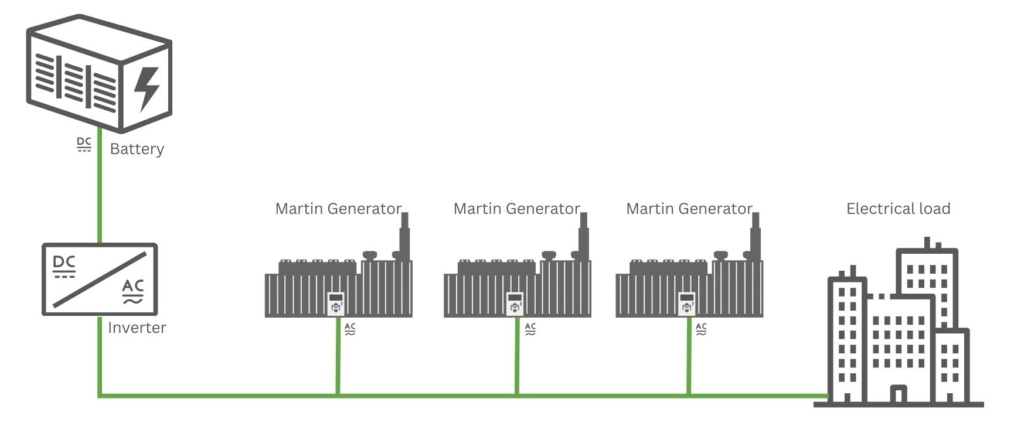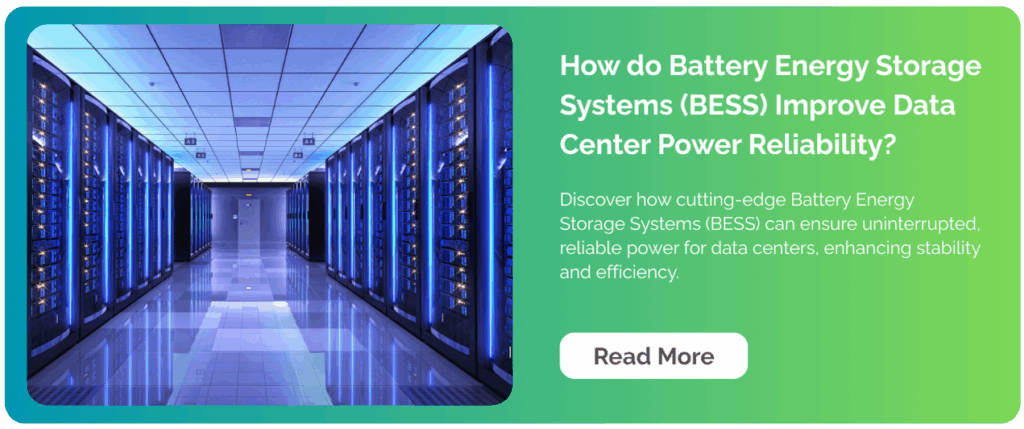The Next Evolution of On-Site Power: Microgrid Battery Integration
In an era demanding greater energy independence, resilience, and efficiency, microgrids have emerged as a powerful solution. At their core, microgrids are localized energy grids that can operate independently from the main utility grid, providing reliable power to a specific facility or campus. Many of these sophisticated systems utilize Combined Heat and Power (CHP) technology, which efficiently generates electricity and captures waste heat for other uses, dramatically improving overall energy utilization.
However, even with the inherent strengths of traditional CHP microgrids, a new layer of innovation is being adopted: the integration of Battery Energy Storage Systems (BESS). This hybridization unlocks even more flexibility, control, and performance, transforming reliable power into truly dynamic

Why Add Batteries to an Existing Microgrid? The Strategic Advantages
Combining the steady, efficient base load power of CHP with the agile response of battery storage creates a symbiotic relationship that addresses several modern energy challenges:
- Elevated Resilience and Seamless Uptime:
- Instantaneous Backup: Unlike generators that require a brief startup time, batteries can respond to grid outages or fluctuations in milliseconds. This instantaneous discharge provides a critical bridge, maintaining power to essential loads during the transition to generator-only operation.
- “Black Start” Augmentation: For facilities that cannot tolerate even a momentary power interruption, batteries can stabilize voltage and frequency immediately after a grid event, allowing the generators to synchronize and come online smoothly, ensuring a truly seamless “black start” of the microgrid.
- Optimized Efficiency and Reduced Operating Costs:
- Peak Shaving: One of the most significant financial benefits comes from “peak shaving.” Utilities often charge higher rates for electricity consumed during periods of highest demand. Batteries can be charged during off-peak hours (when electricity is cheaper) and then discharged during these expensive peak times, reducing the need to pull high-cost power from the grid or run generators at inefficient partial loads.
- Load Leveling: Generators operate most efficiently at or near their rated capacity. Fluctuating facility loads can force generators to cycle on and off, or run at less efficient partial loads. Batteries can absorb surplus power during low demand or discharge during high demand, allowing the generators to run more consistently at their optimal, most fuel-efficient set points. This also reduces wear and tear on the prime movers.
- Energy Arbitrage: If grid-connected, the microgrid can leverage real-time energy pricing by charging batteries when grid power is inexpensive and discharging when it’s costly, effectively optimizing energy procurement.
- Enhanced Renewable Energy Integration:
- Many microgrids are incorporating intermittent renewable sources like solar PV or wind turbines. Batteries are essential for maximizing the value of these assets.
- Smoothing Intermittency: Batteries can store excess renewable energy generated during sunny or windy periods and discharge it when generation is low, smoothing out the variable output and ensuring a consistent power supply.
- Increased Self-Consumption: For facilities with on-site renewables, batteries enable greater self-consumption, reducing reliance on the grid and enhancing energy independence.
- Greater Flexibility and Control:
- An integrated battery system provides the microgrid’s energy management system (EMS) with far more dynamic control. It can quickly respond to changing loads, fluctuating energy prices, grid signals, and facility priorities, optimizing power flow in real-time.
How is This Integration Achieved? The Technical Blueprint

Integrating batteries with an existing or new microgrid, especially one centered on CHP, requires sophisticated engineering and control. The key components and their interaction are:
- Combined Heat and Power (CHP) Generators: These remain the backbone, providing efficient and reliable base load power and heat.
- Battery Energy Storage System (BESS): Comprising battery modules (e.g., lithium-ion), a Battery Management System (BMS) for safety and performance, and thermal management.
- Power Conversion System (PCS): This is the crucial interface. It converts the direct current (DC) power from the batteries into alternating current (AC) power compatible with the facility’s electrical system and the grid. It also manages the charging process.
- Energy Management System (EMS): This is the “brain” of the entire hybrid microgrid. The EMS continuously monitors all operational parameters – facility load, generator output, battery state of charge, renewable generation (if applicable), grid status, and energy prices. It then orchestrates the optimal real-time dispatch of power from the generators and batteries, ensuring stability, efficiency, and adherence to specific operational goals.
- Microgrid Controller: Often part of or closely integrated with the EMS, this controller handles the complex switching and synchronization required for seamless transitions between grid-connected and islanded operation.
The EMS works to charge batteries from excess CHP generation during low-demand periods or from the grid during off-peak rates. When demand spikes, the grid fails, or utility prices are high, the EMS commands the batteries to discharge, supplementing or even temporarily replacing generator output.
The Impact: At Future Proof Energy Solution
This hybrid approach to microgrids is proving invaluable across various sectors:
- Critical Infrastructure: Hospitals, and data centers demand the highest levels of resilience.
- Industrial Facilities: Manufacturing plants benefit from consistent power, reduced demand charges, and optimized fuel use.
- Commercial Buildings: Large offices, retail complexes, and campuses can achieve significant operational savings and advance sustainability goals.
- Remote and Off-Grid Sites: Where grid connection is unreliable or non-existent, hybrid systems offer unparalleled stability and efficiency compared to standalone diesel generation.
The integration of battery energy storage with traditional microgrid assets represents a significant leap forward in energy management. It allows organizations to achieve superior power reliability, unlock deeper cost savings, and contribute to a more sustainable energy future.
Looking For Reliable Energy Solutions? We Can Help.
At Martin Energy Group, we’ve built our reputation on designing and implementing robust, efficient microgrids centered around our advanced CHP systems. Recognizing the transformative potential of integrated storage, we are now actively leveraging our expertise in energy systems and controls to seamlessly incorporate Battery Energy Storage Systems into our microgrid solutions. This allows us to deliver next-generation, highly resilient, and extraordinarily efficient energy platforms that are truly customized to our clients’ unique operational demands and strategic energy objectives. We’re not just building microgrids; we’re building intelligent, adaptable energy ecosystems for the future.
For more information,
Contact Us: 314.300.7700 or email us at battery@martinenergygroup.com
Discover more about batteries by visiting our Battery Page. Click here to explore!

